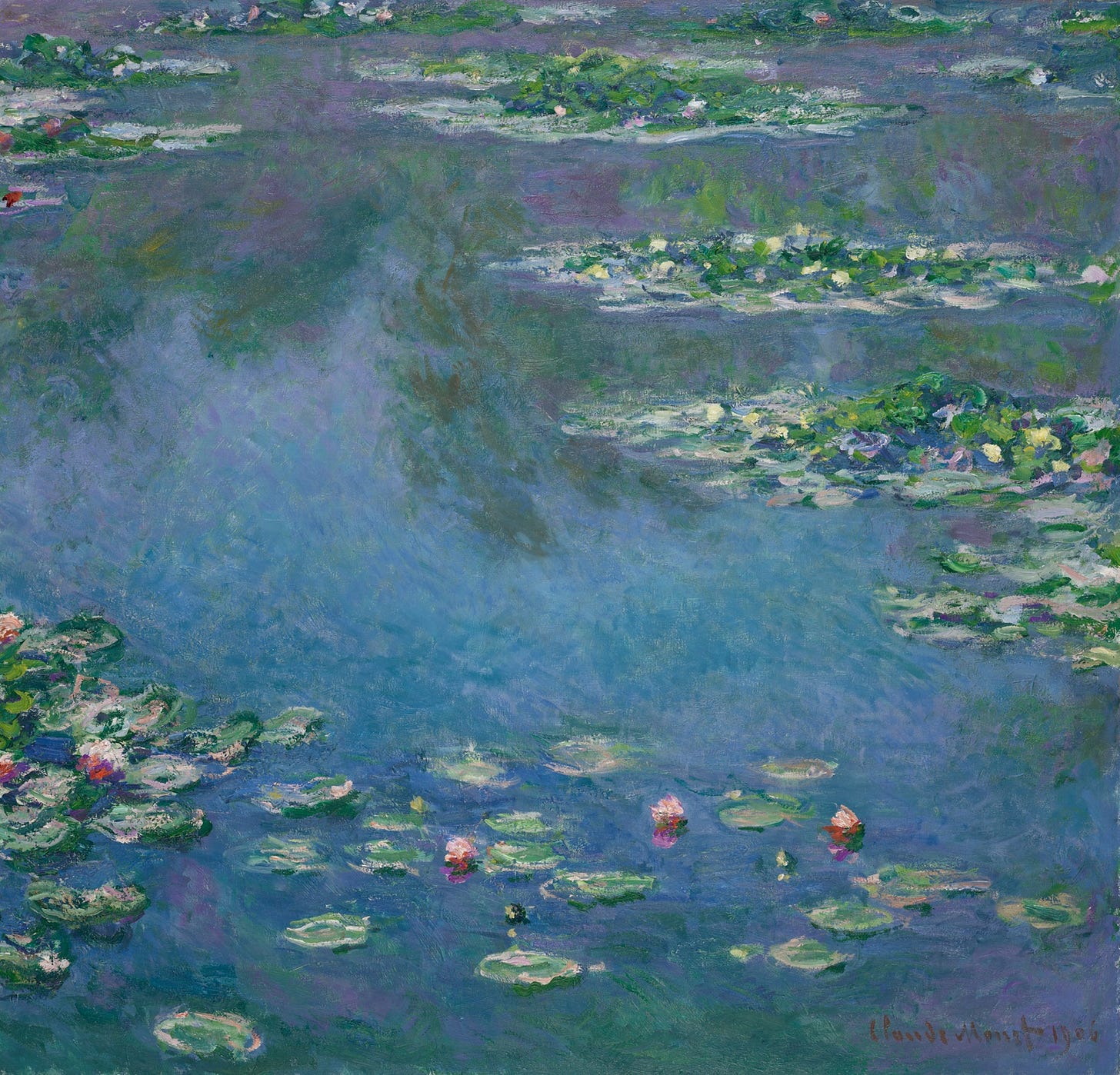Claude Monet in the Garden
Haystacks and poplars, Gothic cathedrals and Venetian views. After exploring several of Monet's most prominent series, we finally turn to his beloved garden at Giverny.
This essay is part of Monet: The Art of the Series. Readers can also find our Impressionism series here. To gain access to the full archive, become a paid subscriber today:

Claude Monet moved to the house in Giverny in 1883.
The people of Giverny, a small village in Normandy, were no doubt scandalized by the artist’s living arrangements. His wife Camille had passed away in 1879, and his mistress Alice Hoschedé now resided with Monet and all of their children from their separate marriages. To make matters worse, Alice’s husband, the former department store magnate Ernest Hoschedé, was still alive. (For some years, the Monets and the Hoschedés all lived together after Ernest went bankrupt in 1877. In a rather peculiar arrangement, Alice nursed Camille before she died at the age of thirty-two.)
Monet chose the property in Giverny as a place in which the families could settle after years of instability. He would be a renter in the beginning; it wouldn’t be until after the success of his Haystacks and Poplars series that he could purchase and expand the property. Nevertheless, the home quickly became a refuge, and Monet would live there until his death in 1926.1
The day after Monet, Alice, and their children moved from Poissy to Giverny, they received terrible news from Paris: Édouard Manet was dead. Monet rushed to the city for the funeral, in which he served as a pallbearer alongside Antonin Proust, Émile Zola, and other prominent Parisians. Among those who attended were Monet’s fellow Impressionists, including Camille Pissarro, Berthe Morisot, and Paul Cézanne.2 Manet’s death marked the beginning of the end for the group’s cohesion, even though Manet never really considered himself to be an Impressionist. Some of the artists moved further from Paris—Monet, of course, had found Giverny, Alfred Sisley moved to Saint-Mammès, Pissarro to Eragny, and Cézanne increasingly remained in the South of France. The painters and their network of friends tried to meet once per month for dinner in Paris, but these get-togethers grew increasingly sporadic.3

When he wasn’t traveling, Monet devoted himself to his garden. The artist was fastidious in its execution, and the result was (dare I say?) as brilliant a work of art as any of his paintings. He carefully arranged each planting scheme, laying out borders to maximize the visual effect of the blooms’ myriad hues. As his fortunes improved, he was able to purchase plants from faraway lands, such as tuberoses from Mexico or bamboo from China. The art critic Arsène Alexandre wrote of the impact of visiting Monet and his garden:



